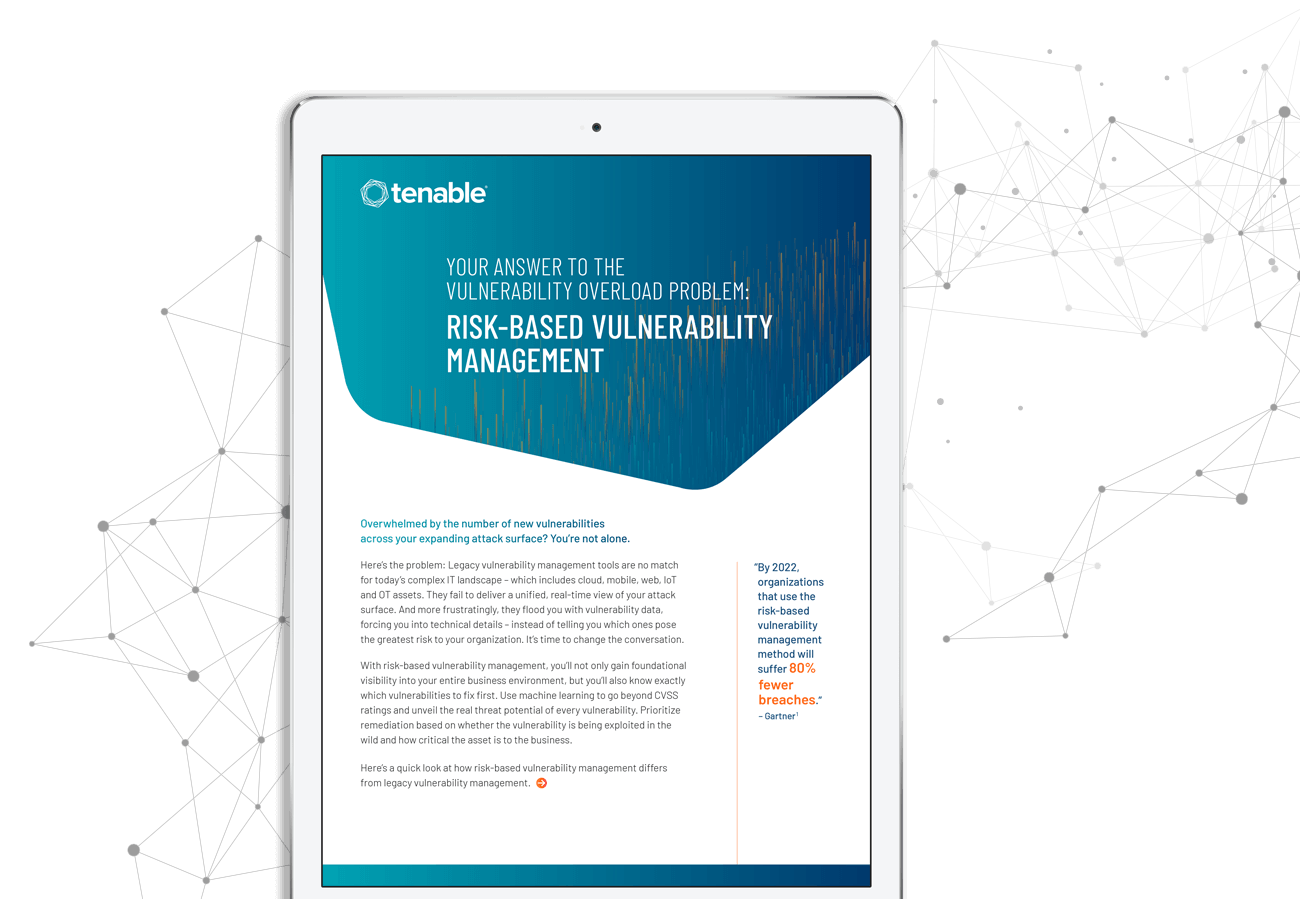Digital Transformation Requires Risk-based Vulnerability Management
Legacy vulnerability management cannot protect your modern attack surface.
Here’s the problem: Legacy vulnerability management tools are no match for today’s complex IT landscape. They fail to deliver a unified view of your attack surface, leaving blind spots in your network. They are also limited to a theoretical view of the risks a vulnerability could potentially introduce, with no context to help you truly understand which ones pose the greatest risk to your organization.
This lack of context causes your security team to waste time chasing after the wrong issues, while missing many of the most critical vulnerabilities that pose the greatest risk to your business.
Risk-based vulnerability management is the solution.
Learn More
Legacy vs Risk-based
Vulnerability Management
To be effective, you should understand vulnerabilities in the context of your business risk and use that data to prioritize your team’s efforts. By taking a risk-based approach to vulnerability management, your security team can take decisive action to reduce the greatest amount of business risk with the least amount of effort.
It’s time to upgrade to:
- Complete visibility for traditional, cloud, web app, mobile and operational technology assets
- Machine learning powered prioritization based on severity, threat actor activity and asset criticality
- Communicate business risk across the enterprise
Comparison Guide
Unsure if you really need risk-based vulnerability management? Read this comparison guide.
Are you overwhelmed by the number of new vulnerabilities across your expanding attack surface? You’re not alone.
But there is a solution.
Risk-based vulnerability management takes the guesswork out of which vulnerabilities you should tackle first. It gives you clear answers so you don’t have to wade through a never-ending vulnerability backlog.
If you want to learn more about how risk-based vulnerability management differs from legacy vulnerability management, this comparison guide has the answers. Download it now to:
- Explore how risk-based vulnerability management delivers full context to help you quickly reduce risk by focusing first on the vulnerabilities and assets that matter most
- See how complete visibility removes blind spots within your attack surface
- Understand how risk-based metrics help you measure and manage business risk

Build Your Risk-based Vulnerability Management Program With a Proven Process

Measure
Calculate, communicate and compare cyber risk and key maturity metrics to drive risk reduction
Discover
Identify and map every asset for visibility across any computing environment
Assess
Understand the state of all assets, including vulnerabilities, misconfigurations and other health indicators
Prioritize
Understand exposures in context to prioritize remediation based on asset criticality, threat context and vulnerability severity
Remediate
Apply the appropriate remediation or mitigation technique
Learn More
- Tenable Vulnerability Management



